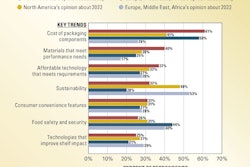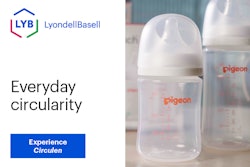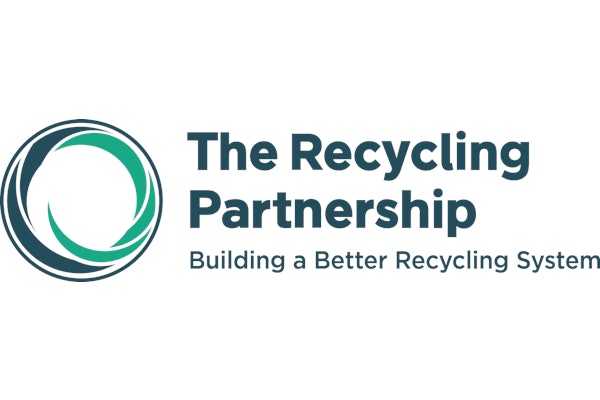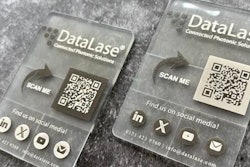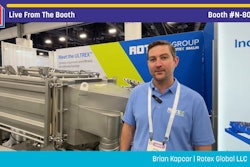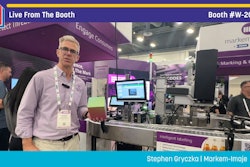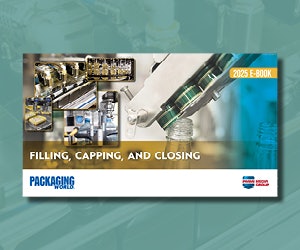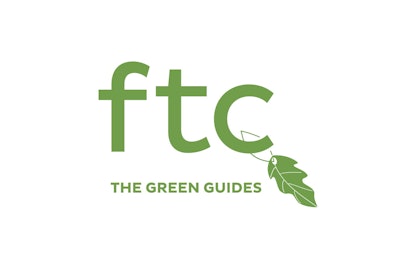
The Federal Trade Commission (FTC) has released the final revisions to its “Green Guides,” which constitute the commission’s guidance for making claims about the environmental benefits of a product in a manner that is not deceptive under Section 5 of the Federal Trade Commission Act. The final revised Green Guides largely reflect the revisions the FTC posed in 2010, with some changes.
The Green Guides were last updated in 1998, and while the commission has indicated it would consider reviewing discrete aspects of the guides if provided new information, it does not intend to conduct another full-scale review for another 10 years. As guidance, the Green Guides reflect the “commission’s current views about environmental claims” but do not reflect legal requirements or bind the commission. They likely reflect, however, how the FTC would view a particular marketing claim in most situations, and the commission notes recent enforcement actions based on environmental marketing claims in its discussion. The Green Guides will also likely inform state authorities and the class action bar in considering whether claims are reasonably considered deceptive.
The final Green Guides implement many of the changes proposed in 2010, including the caution against making general environmental claims and the use of unqualified certifications and seals. According to the FTC’s consumer research, general claims, such as “green,” “environmentally friendly,” or “eco-safe,” imply an array of both wide-ranging and specific benefits and can be misleading without proper qualification. Similarly, the FTC views certifications and seals as likely to be misleading general environmental claims unless appropriately qualified. The Green Guides are intended to apply to advertising to individual consumers and to business-to-business transactions.
The Green Guides implement guidance on various claims described in the 2010 draft, including “degradable,” “compostable,” “recyclable,” “free-of,” and “nontoxic.” The final Green Guides do not, however, provide guidance on claims such as “sustainable,” “organic,” and “natural,” nor do they provide guidance on how life-cycle information can be communicated in advertising or how life-cycle analysis should be conducted (if an advertiser chooses to do so).
An advertiser familiar with the 2010 proposed Green Guides will find many of the concepts in the final Green Guides familiar, but the commission has implemented some changes. The FTC advises that advertisers should become familiar with the final Green Guides and review advertising, labeling, and marketing to assess any effects the final guidance might have on marketing strategies.
The FTC has released a Federal Register notice containing the green guides themselves and has made available on its Web site a longer, 300-plus-page document with the commission’s full explanation and analysis of the new guidance.
What follows is a summary of the commission’s final guidance on the various topics addressed in the Green Guides, prepared by international legal firm Hogan Lovells US LLP.
General principles and background
Section 5 of the FTC Act prohibits unfair or deceptive trade practices. The FTC indicates the Green Guides reflect its current thinking on the applicability of Section 5 of the FTC Act to environmental marketing claims. The Green Guides are meant to reflect how advertising claims would be understood by a general marketing audience; if advertising is targeted toward a particular segment of consumers, the FTC would consider how reasonable members of the targeted population would understand the advertisement.
When reviewing advertising environmental claims, the FTC will consider the net impression conveyed by the advertisement, and an advertiser is responsible for ensuring all reasonable interpretations of advertising claims are truthful, not misleading, and supported by a reasonable basis. According to the FTC, a reasonable basis often requires “competent and reliable scientific evidence.”
The FTC recognizes that qualifications and disclosures are appropriate to limit the scope of an environmental claim, and the FTC recommends that qualifications be “clear, prominent, and understandable.” The FTC recommends specifying what part of the product, package, or service is the subject of the claim and cautions against overstating the effects of an environmental benefit or attribute. The commission cautions that qualifications provided on Web sites will not substitute for qualifications provided with the advertisement because consumers do not always check a product’s Web site before making a purchasing decision.
General environmental benefit claim
The FTC cautions against making unqualified claims of general environmental benefit, such as “eco- friendly” or “green.” The FTC believes that in many cases, these claims are likely to convey “far-reaching environmental benefits and may convey that the item or service has no negative environmental impact.” (The Green Guides apply to claims about products, packaging, and services. For brevity, the terms “items” or “products” are used to refer to all three.)
The FTC believes it is “highly unlikely” marketers can substantiate all reasonable interpretations of these claims. A qualified claim indicating the manner in which the product was more environmentally friendly, such as “eco-friendly: made with recycled materials,” would be appropriate. If a claim conveys that a product or service is more environmentally friendly overall due to a specific feature, the marketer should analyze the trade-offs involved with the specific feature to ensure a net positive environment impact. The FTC would not expect a manufacturer to conduct a complete Life-Cycle Analysis for such a source reduction unless the new feature significantly altered some other portion of the product’s life cycle.
By way of example, the FTC explains that an advertiser touting the reduced plastic content of its plastic bottles would likely not be expected to conduct a full LCA to substantiate the claim unless the reduction in plastic somehow significantly altered the production process, such as by requiring more energy or a different source of plastic. Absent the need for an LCA, a trade-off analysis identifying the reduced plastic use would usually be sufficient to substantiate the claim.
Carbon offsets
The FTC recommends advertisers possess competent and reliable scientific evidence and accounting methods to properly quantify claims about emission reductions or carbon offsets. The commission views claims falsely implying that carbon offsets have already occurred or will occur soon in the future as deceptive and recommends a disclosure statement if carbon offsets will not occur for at least two years.
The FTC also views a carbon-offset claim as deceptive if the carbon offset would already be required as a matter of law. To illustrate, the FTC believes it would be deceptive for a landfill operator who is required by law to capture methane at the landfill facility to advertise offsets based on the captured methane because the methane would be captured regardless of whether the consumer purchases the offset.
Certifications and seals of approval
The FTC views unqualified certifications and seals of approval as general environmental benefit claims, making it important to appropriately qualify a certification or seal. The qualification can occur as part of the certification or seal itself, or with accompanying text provided by the marketer. Certifications and seals do not alleviate the requirement that an advertiser must be able to substantiate claims.
The FTC views third-party certifications and seals of approval as third-party endorsements subject to the commission’s Endorsement Guides. (16 C.F.R. Part 255. The Endorsement Guides provide guidance on the nondeceptive use of endorsements in marketing and outline the parameters of endorsements that would be considered adequate substantiation for marketing claims.) Moreover, the FTC views it as deceptive to falsely claim or imply that an endorsement or certification has been provided by an independent third party. For example, the commission explains that certification by an industry organization whose name does make clear that it is an industry-controlled organization would be deceptive unless qualified.
Moreover, although the FTC generally cautions against using disclaimers on the bradn owner’s Web site to qualify product claims, the commission views Internet-based qualifications as appropriate for qualifying environmental certifications based on multi-factor assessments.
By way of example, the FTC explains that an “Environment Approved” certification granted by an independent third-party certifier that reviewed 35 environmental attributes, which would likely convey a general environmental benefit claim, could be appropriately qualified by the statement, “Virtually all products impact the environment. For details on which attributes we evaluated, go to [website].” The Web site would be expected to provide a detailed summary of the examined environmental attributes analyzed.
Compostable claims
To make a compostable claim, an advertiser should have competent and reliable scientific evidence that all materials in the item will break down into or otherwise become part of usable compost in a safe and timely manner in an appropriate composting facility or in a home compost pile. The claim would require qualification if the item could not be safely composted in a timely manner in a home compost pile, if the claim would mislead consumers about the environmental impact if the item were disposed of in a landfill, or if composting facilities are not available to a substantial majority (at least 60%) of consumers or communities where the item is sold. The FTC clarifies through an example that it would not consider a compostable claim to be deceptive if it could be composted safely in a home compost pile, regardless of the extent to which local composting facilities are available.
Degradable claims
To make an unqualified claim that a product is “degradable,” “biodegradable,” “oxo-degradable,” “oxo-biodegradable,” or “photodegradable,” a manufacturer should have competent and reliable scientific evidence that the entire item will completely break into elements found in nature (decompose) within a “reasonably short period after customary disposal.” Items entering the solid waste stream must completely degrade within one year. The FTC considers it deceptive to make a degradable claim for an item customarily disposed of in a landfill, incinerator, or recycling facility because those facilities do not present conditions in which items will completely decompose within one year.
‘Free-of’ claims
The commission views claims that an item is “free of” a substance as misleading if the item uses different substances that pose the same or similar environmental risks as the substance that is not present or if the substance has not been “associated with the product category.” A product with trace amounts of a substance can still be eligible for a “free-of” claim if the substance is present only at a level associated with it being a “trace contaminant or background level,” the presence of the substance does not cause material harm consumers associate with the substance, and the substance has not been added intentionally to the product. The FTC does not define a “trace contaminant” or “background level,” indicating instead the terms may have different meanings depending on the product category.
Nontoxic claims
The FTC advises that a nontoxic claim conveys that an item is nontoxic for both humans and the environment. Marketers making these claims should possess competent and reliable scientific evidence demonstrating the item is nontoxic for both or should appropriately qualify the claim. Through an example, the commission advises that a claim of “practically” or “essentially” nontoxic would be considered a general nontoxic claim.
Ozone-safe and ozone-friendly claims
By way of examples, the FTC demonstrates it expects an item subject to an “ozone” claim to contain no substances recognized by the Environmental Protection Agency as ozone-depleting substances.
Recyclable claims
The FTC cautions that an item should not be called “recyclable” unless it can be collected, separated, or otherwise recovered from the waste stream through an established recycling program for reuse or for use in producing another item. The FTC views a conspicuous Resin Identification Code (a triangular design of chasing arrows with a number in the center) or a Mobius loop (a circle of chasing arrows) as a recyclable claim. (Note that the FTC considers a Mobius Loop to indicate the item is recyclable and is made from recycled materials.) Such a symbol would not be a recyclable claim if placed alone on an inconspicuous part of the container (for example, embedded on the bottom of the container).
If the full item except “minor incidental components” is recyclable, no qualification is needed; otherwise, a marketer is expected to qualify which components are or are not recyclable. The FTC advises through examples, though, that a recyclable claim is deceptive if the incidental component effectively prevents the entire item from being recycled.
Moreover, the FTC expects marketers to qualify recyclable claims unless recycling facilities are available to a “substantial majority” (defined by the FTC as at least 60%) of consumers or communities in which the product is sold. When recycling facilities are not available to at least 60% of consumers or communities, marketers are expected to provide a qualification about the availability of facilities. The qualification can vary based on the extent to which facilities are available.
The FTC explains that, if recycling facilities are available to “slightly less than a substantial majority,” a claim such as, “This product may not be recyclable in your area” would be appropriate. If only “a few” consumers or communities have access to such facilities, the FTC recommends a qualification such as, “This product is recyclable in only the few communities that have appropriate recycling facilities.” Notably, the FTC indicates in an example that the qualifier, “Recyclable – Check to see if recycling facilities exist in your area,” would be insufficient to qualify a recyclable claim if recycling facilities were not available to a substantial majority of consumers or communities.
Recycled content claims
The commission considers recycled raw material and used, reconditioned, and re-manufactured components to be “recycled content.” A recycled content claim conveys that an item is composed of materials recovered or diverted from the waste stream.
Recycled content can come from pre- or post-consumer waste. For pre-consumer waste (e.g., waste recovered from the manufacturing process), the marketer should have substantiation that the material would have otherwise entered the waste stream. Recycled content claims may distinguish between pre- and post-consumer sources. The FTC indicates in an example that a Mobius Loop would likely indicate an item is both recyclable and made entirely from recycled materials.
Unqualified recycled content claims are appropriate if the entire item, except “minor, incidental components,” is made from recycled material. Marketers should qualify recycled content claims if only some of the item is made from recycled materials. If the recycled content consists of used, reconditioned, or re-manufactured components, the marketer should qualify the claim to so indicate unless that fact would be clear to a reasonable consumer. The FTC provides the example of a rebuild and reconditioned car engine as a situation in which a reasonable consumer would understand the item was made from reconditioned parts rather than recycled raw materials.
Refillable claims
The FTC views an unqualified refillable claim as appropriate only when a marketer provides the means for refilling the package. The marketer could provide this means by collecting and refilling the package (such as a bottle return) or offering a product consumers can use to refill the package (such as a refill container of fabric softener).
Renewable energy claims
The FTC considers it deceptive to make unqualified renewable energy claims if fossil fuel or electricity derived from fossil fuels were used to manufacture any part of the advertised item or power any part of the advertised service, unless the marketer has matched the nonrenewable energy use with renewable energy certificates. If only part of an item or service is produced using renewable energy, the marketer should qualify the claim appropriately. The FTC notes that “consumers may interpret renewable energy claims differently than marketers may intend”; the risk of deception can be “minimize[d]” by specifying the type of renewable energy used (e.g., solar or wind).
By way of example, the commission recommends that a marketer using a mixture of renewable energy sources either disclose all renewable energy sources used or specify the marketer uses a mixed renewable energy portfolio while identifying the renewable source providing the greatest amount of energy in that portfolio.
The FTC views renewable energy certificates as transfers of the right to advertise the use of that renewable energy. The commission notes it would be deceptive for a company that generates renewable energy but sells renewable energy certificates for all of that energy to claim that uses renewable energy in its own operations.
Renewable materials claim
The FTC notes that “reasonable consumers may interpret renewable materials claims differently than marketers may intend” and recommends marketers qualify renewable materials claims unless they can substantiate all express and implied claims. The commission believes marketers can “minimize” the risk of unintended implied claims by specifying the renewable material used and explaining why the material is renewable. Unless the entire product or package is made from renewable materials, with the exception of “minor, incidental components,” the marketer should qualify the renewable materials claim.
Source reduction claims
A manufacturer making a source reduction claim (e.g., “10% less waste”) should appropriately qualify the claim to the extent necessary to avoid deception about the source reduction and the basis for any comparison. The FTC explains that a “10% less waste” claim, without further qualification, could be interpreted as a comparison to either the marketer’s previous product or to a competitor’s product, requiring the marketer to have substantiation for both claims.


